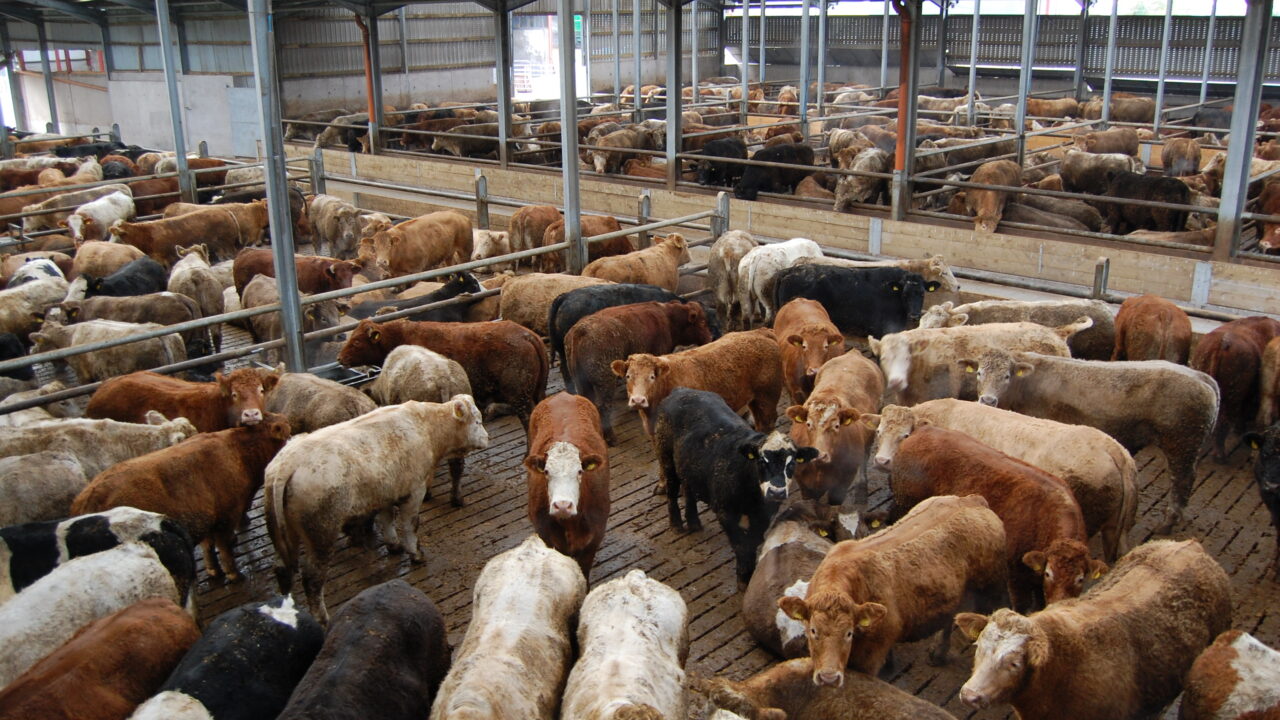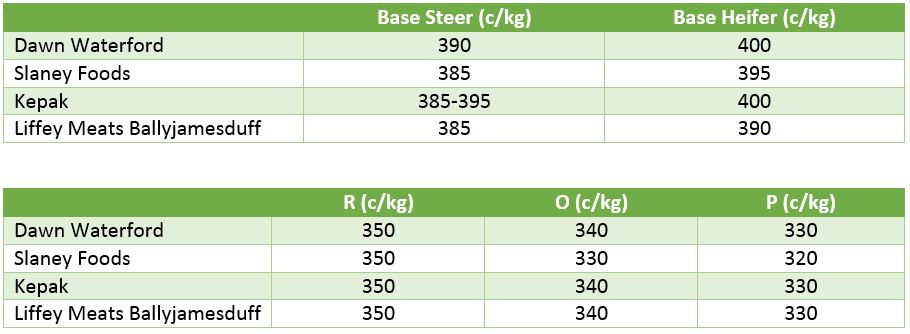Despite relative stability in the quotes factories are offering for prime beef, the prices offered for cull cows have dropped by 5-10c/kg on previous weeks.
The majority of beef plants are now quoting 390c/kg for base steers with some offering quotes as low as 385c/kg for these lots.
Some plants are now quoting 390c/kg for heifers, but the majority of plants are holding prices at 400c/kg.
A number of plants are now sitting at 350/kg for R grade cows, with these quotes down 10c/kg on last week when plants offered 360c/kg.
The plainer type dairy culls have also fallen slightly with plants quoting 340/kg for the O type lots.
The poorer P type cows have also slipped by approximately 5c/kg and are now making 330c/kg.
Weekly beef kill still above 30,000, but total kill is well behind 2014 figures
The national weekly beef kill at export plants is still above the 30,000 mark, figures from the Department of Agriculture show, with 30,470 animals slaughter last week (week ending September 20).
However, the week-on-week kill is back by approximately 400 head. There has also been a reduced total kill with the 2015 figure running 54,000 head behind 2014 levels.
To September 20, there has been 1.13m cattle slaughtered at export meat plants, this is down from 1.18m in 2014, the Department says.
Figures from the Department of Agriculture also show that there were 7,269 heifers slaughtered last week, which is a fall of 1,317 form the corresponding week last year, furthermore the cumulative heifer kill to date is back by 6,000 head.
The fall in heifer throughout has been matched by a fall in the number of steers coming forward, these slaughterings have fallen by 1,568, bring the total steer slaughter to date to 16,817.
Young bull slaughterings are also back on the same period in 2014, with 1,686 of these animals making their way to beef plants last week, it says.
These figures also show that the cull trade is back significantly on 2014 levels, with a 802 and 89 throughput drop for cows and older bulls respectively.
Cattle trade
The cattle trade has eased this week on the back of reduced demand. Trade remains relatively good in the UK but mixed across the continent, according to Bord Bia.
According to Bord Bia, there has been some seasonal increase in demand particularly for diced forequarter cuts with a firm demand for round cuts and some reduced demand for steak cuts.
In France, little change in the trade was reported with the difficult market conditions of recent weeks continuing while in Italy a steady trade was reported, it says.

